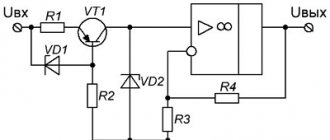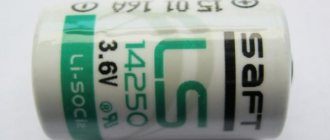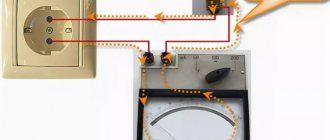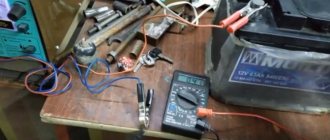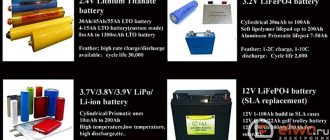Chemical current sources are devices and instruments that produce voltage during a chemical redox reaction. They are also called electrochemical, galvanic cells. Their basic principle of operation is based on the interaction of chemical reagents which, when reacting with each other, generate electricity in the form of direct current. This process occurs without mechanical or thermal influence, which are the main factors that play a superior role among other constant voltage generators. Chemical current sources, abbreviated as HIT, have long been used not only in everyday life, but also in production.
A little history of the creation of HIT
Back in the eighteenth century, the Italian scientist Luigi Galvani came up with the simplest element that chemically generated electric current. However, he was not only a scientist, but also a physicist, doctor, and physiologist. He was interested in and conducted experiments that were aimed at studying the reactions of animals to external stimuli. Like everything ingenious, the first chemical source of energy was obtained by Luigi absolutely by accident, during numerous experiments on frogs. After attaching two metal plates to the frog's leg muscle, muscle contraction was observed. Galvani considered this a nervous reaction to an external stimulus and outlined this in the results of his research, which fell into the hands of another great scientist, Alessandro Volta. He laid out his theory about the occurrence of tension as a result of a chemical reaction that arose between two metal plates in the environment of the muscle tissue of a frog.
The first chemical source of electric current was a container with a salt composition, into which two plates of different materials were immersed. One is copper, the other is zinc. It was this device that in the future, and more specifically in the second half of the nineteenth century, was used in the invention and creation of a manganese-zinc cell within which was the same salt electrolyte.
Electricity transmission
Electric current is the ordered movement of charged particles. The charge carriers of electric current in electrolytes are ions. They are formed as a result of the disintegration (electrolytic dissociation) of substance molecules under the action of water molecules in solution or upon heating and the formation of a melt.
The splitting of molecules occurs due to the breaking of polar covalent or ionic bonds. The intensity of dissociation depends on the temperature and concentration of the solution. The nature of the electrolyte also influences the degree of dissociation. In this regard, the following are highlighted:
- weak electrolytes , which disintegrate partially or not at all;
- strong electrolytes that quickly break down into ions.
Weak electrolytes include most organic substances, weak acids, poorly soluble salts and insoluble bases. Strong acids, alkalis, and salts are considered strong electrolytes.
Rice. 1. The process of electrolytic dissociation.
The ions formed as a result of dissociation are divided into two types:
- cations are positively charged particles;
- Anions are negatively charged particles.
The conductor of electric current in electrolytes is the electrode. It can be an anode or cathode. The anode is connected to the positive pole of the current source, the cathode is connected to the negative pole. The anode oxidizes the substances in the electrolyte, while the cathode reduces them.
Rice. 2. Electrodes.
If two electrodes are placed in an electrolyte solution - the cathode and the anode - and an electric current is turned on, the ions will begin to move under the influence of the electric field. Cations will rush to the cathode, anions to the anode. Having reached the electrodes, the ions are neutralized, turn into neutral atoms and settle.
The process of decomposition of a substance into its constituent parts, which are deposited on electrodes, is called electrolysis.
Operating principle
Power supplies 24 and 12 Volts
The device that produces electric current contains two electrodes that are placed between the electrolyte. It is at their border of contact that a small potential appears. One of them is called the cathode, and the other the anode. All these elements together form an electrochemical system. During a redox reaction between the electrodes, one element donates tiny particles of electrons to the other. Therefore, it cannot happen forever, and over time, the properties of each element of this chain are simply lost. Electrodes can be presented in the form of metal plates or grids. After immersing them in a medium with an electrolyte, a potential difference arises between their terminals, which is called open circuit voltage. Even if at least one of the electrodes is removed from the electrolyte, the voltage generation process stops.
Composition of electrochemical systems
The following chemicals are used as electrolytes:
- Aqueous solutions based on alkalis, acids, salts, etc.;
- Non-aqueous ionic conducting solutions that are obtained by dissolving salts in inorganic or organic solvents;
- Solid compounds containing an ionic lattice, where one of the ions is mobile;
- Matrix electrolytes. This is a special type of liquid solutions and melts that are located in the pores of a solid non-conducting element - an electron carrier;
- Molten salts;
- Ion exchange electrolytes with unipolar conductivity system. Solids with a fixed ionogenic group of the same sign.
Principle of operation
A chemical source that produces direct current has a certain operating principle. The algorithm for generating electricity through chemical reactions between certain substances is quite simple to understand; a person far from chemistry or physics can figure it out.
Important! Due to the use of fairly aggressive types of substances that are part of such sources, it is prohibited to open the structures yourself. This can be harmful to health and life. Additionally, certain disposal is required.
A redox reaction occurs between the oxidizing agent and the reducing agent (electrolyte). As a result, electrons are released, which begin to move sequentially in a certain direction. It is thanks to the energy released as a result of the chemical reaction that the movement of elementary charged particles occurs.
This is how you get electric current, which you also need to be able to produce. If you do not create the necessary conditions for electrons to escape to the external circuit, then the substance will only release heat. To do this, you need to prepare two electrodes: the anode (where oxidation occurs) and the cathode (reduces the substance).
You may be interested in this: Why is potential equalization needed?
The principle of a chemical current source
The amount of electricity that is obtained as a result of the redox reaction depends on the following factors:
- volume and concentration of electrolyte;
- the material from which the electrodes are made;
- design of external electrical circuit.
There are several options for the most effective and used electrolytes with a certain concentration and mass.
Classification of galvanic cells and their selection
Basic concepts about relay protection
Generators of electric current resulting from a chemical reaction are divided into:
- Sizes;
- Design features;
- The method and reagent through which electricity is generated.
All elements that produce current during a chemical reaction are divided into:
- Chargers that can be repeatedly charged from a direct current source during operation are called batteries;
- Non-rechargeable, that is, disposable sources that, after the completion of a chemical reaction, simply become unusable and must be disposed of. Simply it is a galvanic cell or battery.
In order to select a source of electricity based on a chemical reaction, you need to understand its characteristics, which include:
- Voltage between anode and cathode when the circuit is open. This indicator most often depends on the selected electrochemical system, as well as the concentration and treated of all components;
- Source power;
- Current indicator;
- Capacity;
- Electrical indicators, that is, the number of charge and discharge cycles;
- Operating temperature range;
- The shelf life between the time an item is created and before it is put into use;
- Full service life;
- Strength, that is, protection of the housing from various mechanical damage and influences, as well as vibrations;
- Working position, some of them only work in horizontal positions;
- Reliability;
- Easy to operate and maintain. Ideally, there is no need for the slightest intervention in the work during the entire service life.
When choosing the right battery or accumulator, you must take into account its electrical ratings such as voltage and current, as well as capacity. It is this that is key to maintaining the functionality of the device connected to the source.
ELECTRICITY,ordered (directed) movement of electrically charged particles or charged macroscopic particles. tel. The direction of current is taken to be the direction of movement of positively charged particles; if the current is created by negatively charged particles (for example, electrons), then the direction of the current is considered opposite to the direction of movement of the particles.
A distinction is made between the current of conductivity, which is associated with the movement of charged particles relative to a particular medium (that is, inside macroscopic bodies), and the convection current -
macroscopic movement charged bodies as a whole (for example, charged raindrops).
The presence of ethylene in conductors can be judged by the actions it produces: heating the conductors, changing their chemistry. composition, creation of a magnetic field. The magnetic effect of current manifests itself in all conductors without exception; in superconductors
there is no release of heat, but chemical
The effect of current is observed mainly in electrolytes.
The magnetic field is generated not only by conduction current or convection current, but also by an alternating electric field in dielectrics and vacuum. A quantity proportional to the rate of change of the electric field over time, J.K.
Maxwell
called
displacement current.
The displacement current is included in
the Maxwell equation
on an equal footing with the current caused by the movement of charges.
Therefore, the total electromagnetic current, equal to the sum of the conduction current and the displacement current, can be defined as a quantity on which the intensity of the magnetic field depends. Quantitatively, electric current is characterized by a scalar quantity, the current strength I,
and a vector quantity,
the electric current density j.
With a uniform distribution of current density over the cross section of the conductor, the current strength is
I - jS = q0nvS,
where qo is the charge of the particle,
n is
the concentration of particles (the number of particles per unit volume),
v is
avg. the speed of directional movement of particles, S is the cross-sectional area of the conductor.
For the emergence and existence of electrical energy, the presence of free charged particles (that is, positively or negatively charged particles not bound into a single electrically neutral system) and a force that creates and maintains their ordered movement is necessary. Usually the force causing such movement is the electrical force. fields inside the conductor, determined by electrical voltage
at the ends of the conductor.
If the voltage does not change over time, then a direct current is established in the conductor;
if it changes,
an alternating current is established.
The most important characteristic of a conductor is the dependence of current on voltage - the current-voltage characteristic.
It has the simplest form for metal.
conductors and electrolytes: current is directly proportional to voltage (Ohm's law).
Depending on the ability of substances to conduct electricity, they are divided into conductors and dielectrics
and
semiconductors.
In conductors there are a lot of free charged particles, and in dielectrics there are very few.
Therefore, the current strength in dielectrics is extremely small even at high voltages, and they serve as good insulators.
The intermediate group consists of semiconductors.
In metals, free charged particles - current carriers - are conduction electrons, the concentration of which is practically independent of temperature and amounts to 1022-1023 cm-3.
Their combination can be considered as an “electron gas”.
The electron gas in metals is in a state of degeneracy ,
i.e. quantum properties are clearly manifested in it.
The quantum theory of metals explains the dependence of electrical energy. metal resistance depends on temperature (linear increase with increasing temperature) and direct proportionality between current and voltage .
In electrolytes, E. t. is due to the directional movement of positive and negative. ions. Ions are formed in electrolytes as a result of electrolytic dissociation.
As the temperature increases, the number of solute molecules breaking up into ions increases and the resistance of the electrolytes decreases. When current passes through the electrolyte, the ions approach the electrodes and are neutralized. The mass of the substance released on the electrodes is determined by Faraday's laws of electrolysis.
Gases made of neutral molecules are dielectrics. Electrolysis is carried out only by ionized gases— plasma.
Current carriers in plasma are positive and negative.
ions (as in electrolytes) and free electrons (as in metals). Ions and free electrons are formed in a gas as a result of strong heating or external influence. influences ( ultraviolet radiation, x-rays,
collisions of fast electrons with neutral atoms or molecules, etc.
).
Emission in electric vacuum devices (electron tubes, cathode ray tubes, etc.) is created by flows of electrons emitted by a heated electrode—the cathode (see Thermionic emission).
Electrons are accelerated electrically. field and reach another electrode - the anode.
In semiconductors, current carriers are electrons and holes.
L
it.: Tamm I.E., Fundamentals of the theory of electricity, 9th ed., M., 1976, ch. 3, 6; Kalashnikov S.G., Electricity, 4th ed., M., 1977 (General course of physics), ch. 6, 14-16, 18. G. Ya. Myakishev.
Based on TSB materials.
Modern chemical current sources and their applications
Introduction to peak and other electricity tariff zones
It is difficult for a person to live a modern life without these mobile energy generators, which he encounters throughout his life, starting with children's toys and ending with, say, a car.
The areas of application of various batteries and accumulators are so diverse that it is very difficult to list them. The operation of any mobile phone, computer, laptop, watch, remote control would be impossible without this portable and very compact device for creating a stable electrical charge. In medicine, sources of chemical energy are widely used to create any device that helps a person live a full life. For example, for hearing aids and pacemakers that can only operate from portable voltage sources, so as not to confine a person to wires. In production, entire battery systems are used to provide voltage for shutdown and protection circuits in the event of a loss of incoming high voltage at substations. And this food is also widely used in all vehicles, military and space technology. One of the types of common batteries is lithium electric current sources, since this particular element has a high specific energy. The fact is that only this chemical element turns out to have a strong negative potential among all substances known and studied by man. Lithium-ion batteries stand out among all other batteries in terms of the amount of energy generated and their small dimensions, which allows them to be used in the most compact and small electronic devices.
Classification
The most common types are galvanic cells and batteries. Almost everyone is familiar with them. But the classification of such devices is broader and also assumes the existence of fuel cells.
Current source classification scheme
Galvanic cells
The galvanic cell got its name in honor of the scientist Galvano, who discovered the wonderful possibility of producing electric current by creating a simple structure of electrolyte and electrodes. They are considered the first prototypes of modern devices for generating electricity through chemical reactions.
You may be interested in this All about electric currents
Chemical current sources - galvanic cells and batteries
Note! Currently, this device is more compact and safer to use; it is a regular battery. The peculiarity of the operation of such a device is that it is one-time use. After the final decomposition of the electrolyte into substances, it is impossible to recharge them for the following reactions.
Electric batteries
An electric battery is a more versatile version of the device that can be charged several times after losing its electrolyte charge. This feature is explained by the regeneration of substances that form the electrolyte.
Battery device
In this case, charging is carried out from an external (external) current source. Motorists often encounter this need to restore the reagent in batteries when charging the battery.
Fuel cells
An electrochemical fuel cell is a promising source that is quite important for creating comfortable and, in some situations, vital living conditions.
Thermal chemical source
The peculiarity of the operation of such an element is as follows. Each time, a certain portion of electrolyte is supplied to the electrodes, which, after discharge, is removed from the structure. For example, thanks to this operating principle, a backup current generator can produce electricity for 10-15 years.
Note! After the expiration date, operation can be extended if power is restored.
Methods for recycling chemical energy sources
The problem of recycling chemical voltage sources of different sizes is an environmental problem for the entire planet. Modern sources contain up to thirty chemical elements that can cause significant harm to natural resources, therefore entire programs have been developed for their disposal and specialized processing workshops have been built. Some methods make it possible not only to efficiently recycle these harmful substances, but also to return them to production, thereby protecting the environment. In order to extract non-ferrous metals from batteries and accumulators, entire pyrometallurgical and hydrometallurgical complexes have now been developed and used in civilized countries that monitor and care about the environment. The most common method for recycling waste chemical power sources is a method that works by combining these processes. Its main advantage is considered to be a high degree of extraction with a minimum amount of waste. This method of pyrometallurgical, hydrometallurgical and mechanical processing includes eight main stages:
- Grinding;
- Magnetic separation;
- Burning;
- Additional grinding;
- Isolation of large and small elements using screening;
- Water purification and leaching;
- Sulfuric acid leaching;
- Electrolysis.
Organizing the correct collection and disposal of chemical waste makes it possible to minimize the negative impact on both the environment and human health.
Modern application of HIT
Chemical current sources are currently used in:
- vehicles;
- portable devices;
- military and space technology;
- scientific equipment;
- medicine (pacemakers).
Common examples of HIT in everyday life:
- batteries (dry batteries);
- rechargeable batteries for portable household appliances and electronics;
- uninterruptible power supplies;
- car batteries.
Lithium chemical power sources are especially widely used. This is because lithium (Li) has the highest energy density. The fact is that it has the most negative electrode potential among all other metals. Lithium-ion batteries (LIB) are ahead of all other HITs in terms of specific energy and operating voltage. Now they are gradually mastering a new area - road transport. In the future, scientists' developments related to the improvement of lithium batteries will move in the direction of ultra-thin designs and large, heavy-duty batteries.
